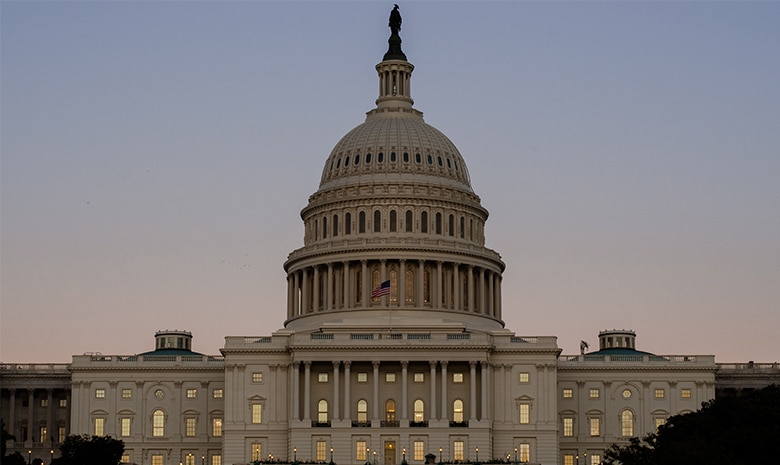New Flexibility to Use Federal Title Funds for Technology Infrastructure and Teacher Training for Distance Learning
Education Domain Blog

The U.S. Department of Education (ED) created new flexibility for the use of federal title funding due to COVID-19. States can repurpose existing K-12 federal funding to pay for technology and teacher training needs associated with shifting to online learning.
States and districts are recognizing the growing need to provide teachers with professional development focused on distance education and remote learning, as the COVID-19 outbreak closes schools. The new flexibility from ED allows districts to use existing federal funding to expand professional learning to include remote and distance learning, as teachers navigate providing instruction to students in their homes.
While schools are closed, many communities are grappling with the digital divide between students who have internet access and computers at home to learn online and those who do not have access.
What’s New: Repurposing Existing Funds for Distance Learning
The Coronavirus Aid, Relief, and Economic Security (CARES) Act allows schools to repurpose existing K-12 education funds for technology infrastructure and teacher training for distance learning. The Act allocates $31 billion directly for schools and universities. The law also provides schools with the flexibility to redirect existing funds they may have received through other programs to “move resources to areas of highest need during the national emergency.”
In addition, the CARES Act allows states new flexibilities from some federal funding requirements. School districts can request to carry over more than 15 percent of their Title I grants to the next fiscal year. Requirements that would normally prevent districts from spending more than 15 percent of Title IV block grant money to purchase technology infrastructure are being waived. Specific flexibilities include:
- Section 1127(b) of Title I, Part A of the ESEA waiving the 15 percent carryover limitation for Title I, Part A funds;
- Section 421(b) of the General Education Provisions Act (GEPA) to extend the period of availability of prior fiscal year funds, for Title I, Parts A-D, Title II, Title III, Part A, Title IV, Parts A-B, and Title V, Part B programs, and the McKinney-Vento Homeless Children and Youth program;
- Section 4106(d) of Title IV, Part A of the ESEA waiving a needs assessment to justify the use of funds;
- Section 4106(e)(2)(C), (D), and (E) of Title IV, Part A of the ESEA waiving content-specific spending requirements;
- Section 4109(b) of Title IV, Part A of the ESEA waiving spending restrictions on technology infrastructure; and
- Section 8101(42) of the ESEA offers flexibilities on the definition of professional development, which might otherwise limit the ability to quickly train school leaders and teachers on topics like effective distance learning techniques.
Other Flexibilities
The Education Department issued various waivers to support states and local districts in the continuity of learning during the COVID-19 pandemic. From providing waivers that exempt states from assessment and accountability reporting for the remainder of the school year, to providing extensions for submission of Perkins V plans, ED has issued widespread flexibility to ensure that schools can continue to serve students.
- Assessments and Accountability
- ED issued guidance to ensure that schools can continue serving students. The Department invited states to apply for a waiver allowing states to forgo administering annual statewide assessments and identifying schools for support and improvement. States may also apply for a waiver from the requirement that testing data be used in the statewide accountability system due to the national emergency. All 50 states have been granted waivers for 2020.
- Career and Technical Education
- The Department provided extensions for states that need additional time to submit their Perkins V plans. The plan allowed states to receive their Perkins V funds on time, even if they need an extension, and it allowed states to provide funding recipients additional time to complete their applications.
- Students with Disabilities
- ED released a statement to offer guidance: “As school districts nationwide take necessary steps to protect the health and safety of their students, many are moving to virtual or online education (distance instruction). Some educators, however, have been reluctant to provide any distance instruction because they believe that federal disability law presents insurmountable barriers to remote education. This is simply not true. We remind schools they should not opt to close or decline to provide distance instruction, at the expense of students, to address matters pertaining to services for students with disabilities. Rather, school systems must make local decisions that take into consideration the health, safety, and well-being of all their students and staff.”
- E-Rate and Remote Learning
- The Federal Communications Commission (FCC) issued a waiver allowing schools and libraries to solicit and accept improved telecommunications capacity, Wi-Fi hotspots, and network gear and equipment to respond to increased needs during COVID-19. The FCC is also encouraging broadband service providers to partner with schools and libraries to provide hotspots and mobile connectivity services to communities.
- School Meals
- The U.S. Department of Agriculture (USDA) provided states flexibility in providing meals for students during the pandemic. States have proactive flexibility from the USDA, allowing them to continue providing meals to students outside of the school walls during this time.
Learn More
- Aurora Institute Continuity of Learning Resources
- Report – Access and Equity for All Learners in Blended and Online Education
- Report – A National Primer on K-12 Online Learning (2nd Edition)
- Report – iNACOL Standards for Quality Online Courses (v2)
- Report – iNACOL National Standards for Quality Online Teaching (v2)
- Report – iNACOL Blended Learning Teacher Competency Framework
- Webinar – Lessons from Advanced Online Teachers and Advice for Getting Started in Online Teaching
- Webinar – A Roadmap for Blended Learning Implementation
- Issue Brief – Future Focused State Policy Actions to Transform K-12 Education
Alexis Chambers is Policy Associate at Aurora Institute.